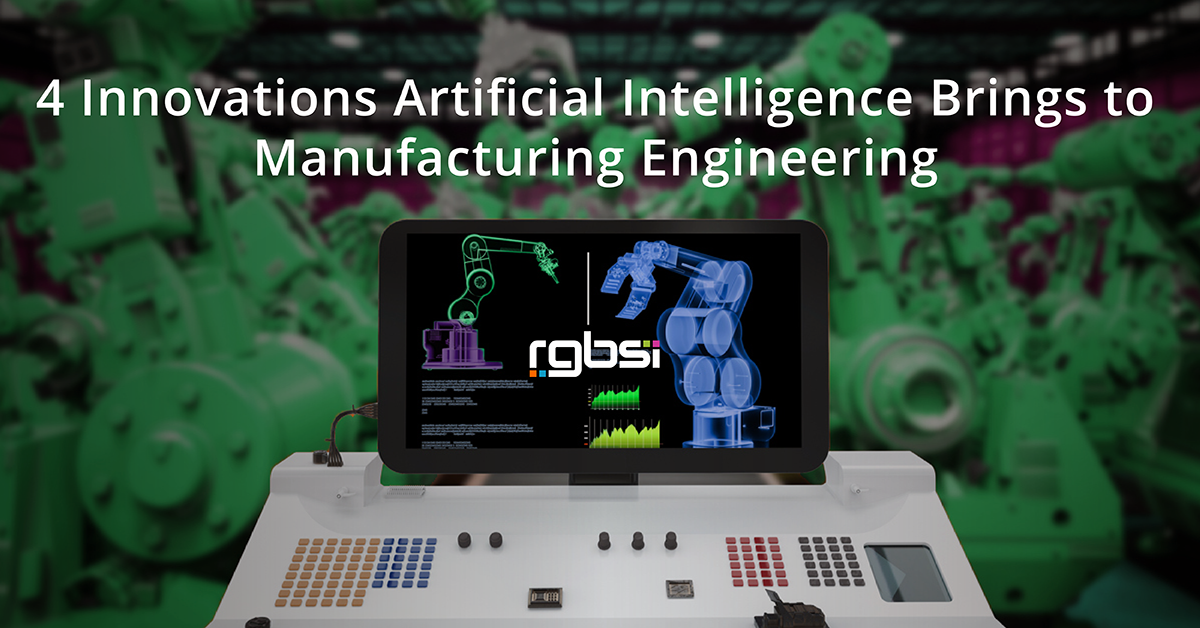
While robots have been used in factories for some time, modern robots are no longer designed to perform those monotonous mechanical tasks but rather are smart players in Industry 4.0. Artificial intelligence (AI) is a pure opportunity in manufacturing engineering: from maintenance to virtual design, it enables modern, advanced, and custom products.
It is indisputable that AI plays a very critical role in the future of manufacturing engineering. Recently, research conducted by Forbes Insight on AI shows that 44% of the respondents from automotive and manufacturing industries believe AI holds the key to the success of manufacturing in the next 10 years. Today, human and robot synchronization yield magnificent discoveries because of the adoption of manufacturing practices and information technology). Here are 4 innovations AI brings to manufacturing engineering operations.
1. Collaborative Manufacturing
The manufacturing industry is getting a makeover courtesy of collaborative manufacturing. Research conducted by the World Economic Forum shows that the collaboration of AI, advanced robotics, IoT (internet of things), and additive manufacturing will inaugurate the fourth industrial revolution. With the adoption of AI initiatives in manufacturing intensive industries, companies are expecting to keep inventory lean, increase revenue, and reduce operating expenses. Manufacturers that have adopted AI and machine learning reduce equipment downtime, detect production flaws, increase their supply chain, and abbreviate design times.
Use of IoT and smart sensors is also impactful in the manufacturing industry. IoT can trace and examine production quotas, and sum the control panels for supervisory purposes. Aggregating IoT with augmented reality and virtual reality to analyze customer feedback provides meaningful insight that assists towards valuable innovation generation.
2. Microscopic Defect Identification
The human eye can’t detect microscopic flaws half the diameter of a strand hair, but a robot fitted with a powerful camera and zoom inspection capabilities would be able to spot the most minuscule flaws. It is difficult for a machine to make accurate judgment and corrections, but humans can manage this logical step and feed decisions back to the machine. For instance, Landing.ai, a machine designed by Silicon Valley Maestro Andrew Ng is developed with the machine-vision capability to detect microscopic flaws in petite products like circuit boards at ultra-high resolutions. This machine uses a machine-reading algorithm that is trained on outstandingly tiny volumes of sampling images. Landing.ai can “see”, process the information, and even learn from the information it sees. Once it detects a fault, it alerts the operator immediately, which is a process referred to automated issue identification.
3. Design Alternatives
AI in manufacturing is a key player in a modern process referred to as a generative design. During this new aspect of manufacturing, engineers input their design objectives including material parameters, manufacturing processes, and cost constraints into the generative design software. The software program tests all the probable alternatives and promptly “generates” the design permutations as a solution. Lastly, the software uses machine learning capability to examine each iteration to determine the best design to adopt.
4. Predictive Maintenance
Maintenance of machines in manufacturing is one the most frequently performed tasks. Now, AI comes with one of a kind method known as predictive maintenance. Unlike preventive maintenance, this new method eradicates guesswork as machines are programmed to constantly account their statuses on an up-to-date basis. To implement predictive maintenance, the manufacturing systems are embedded with digital twins, detectors, and modern analytical tools. It not only saves the manufacturer’s time and labor costs but also ensures optimal manufacturing performance. For instance, predictive maintenance is used in equipment of manufacturing titanium where IoT and machine learning are extensively used.
Conclusion
Today, robots are being used holistically in manufacturing engineering and production continues emerge since inception. Sensors can be used to monitor every stage of production and share data with an AI system. From flaw detection to corrective methods, these manufacturing practices are more effective and much faster when done by machines.
In conclusion, despite the anticipated unemployment fears caused by the adoption of artificial intelligence, the manufacturing industry will boast higher production and high efficacy. It is time for the workforce to focus more on innovative technology and smart operations to contribute to the betterment of the manufacturing engineering sector.
About RGBSI
At RGBSI, we deliver total workforce management, engineering, quality lifecycle management, and IT solutions that provide strategic partnership for organizations of all sizes. As an organization of engineering experts, we understand the importance of modernization. Our engineering solutions provide clients with agility and enhancement through optimizing the value chain to meet industry protocols and full product specifications. Learn more about our automation and digital engineering services











